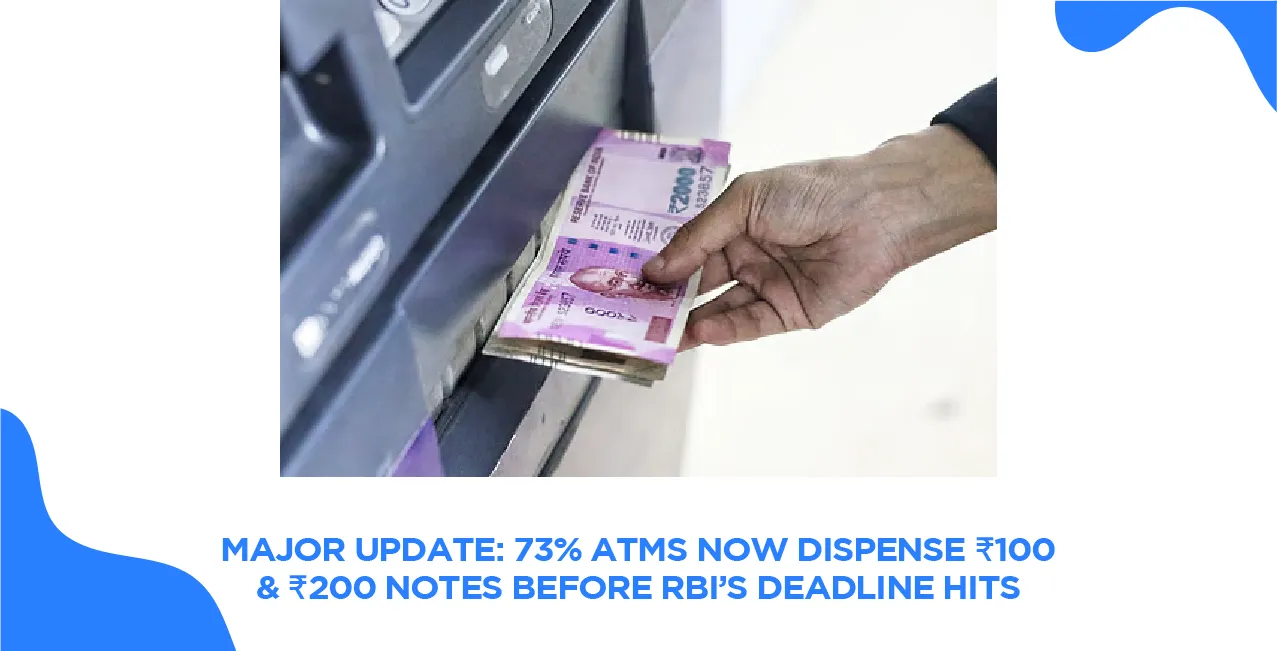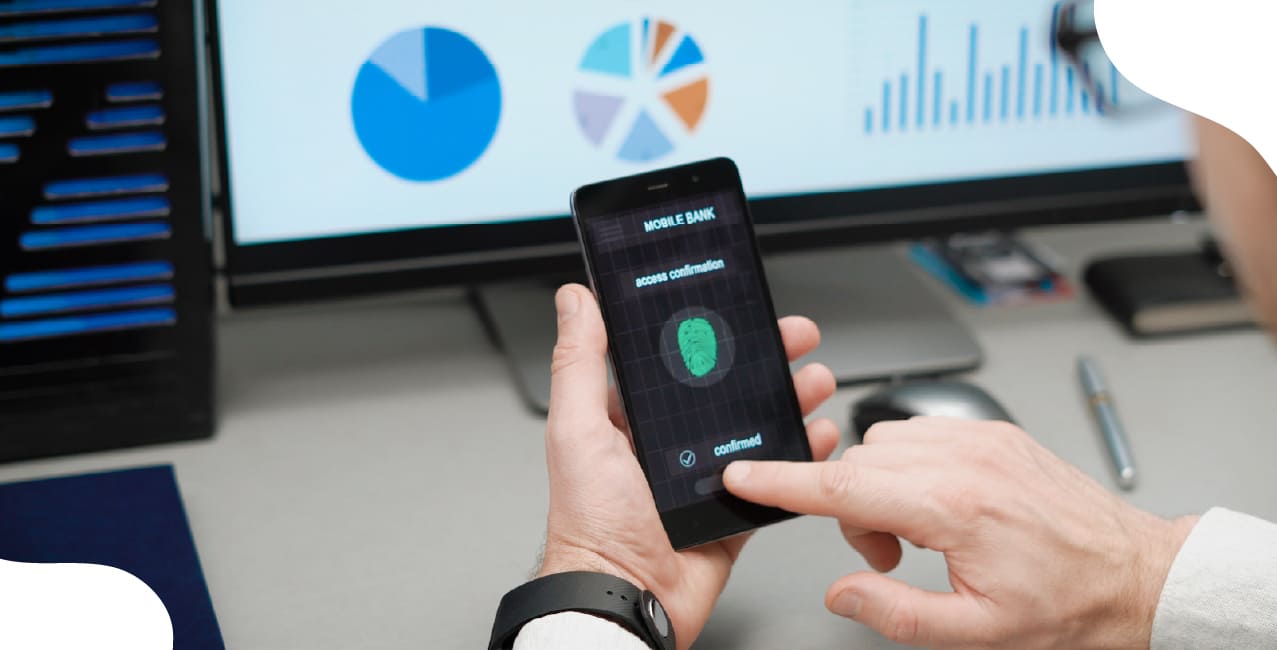
Author
LoansJagat Team
Read Time
4 Min
19 Jun 2025
Major Update: 73% ATMs Now Dispense ₹100 & ₹200 Notes Before RBI’s Deadline Hits
Until last year, most housewives were asking the vendors if they had a change of ₹500 notes. Remember?
It was not possible to do minute monetary dealings with big bills like a ₹500 note. Recognising this, the Reserve Bank of India (RBI) issued a circular in April 2024 directing banks to ensure a sufficient supply of ₹100 and ₹200 notes through ATMs.
The aim was to make daily transactions smoother for the average Indian and to improve access to lower denomination currency across both urban and rural areas. Now, with the September 30, 2025, deadline nearing, a significant shift is visible in ATM operations.
Use of Lower Denomination Currency
For a large portion of India's population—especially the middle- and lower-income groups—daily cash transactions are a normal thing. According to a Frost and Sullivan Report, around 60% of all household spending in India is still done through cash.
Denominations of ₹100 and ₹200 are preferred for groceries, transport, utilities, and other small expenses. Without access to smaller notes, individuals often face difficulty in obtaining change for higher denominations like ₹500.
Refer to this table to understand why small currency notes are crucial for daily life:
User Group | Spending Pattern | Need for ₹100/₹200 Notes |
Middle-Class Households | Daily grocery, school fees, fuel | Easy for exact payments without needing change |
Street Vendors & Retailers | High-volume, low-ticket transactions | Helps in giving and receiving exact change |
Senior Citizens | Prefer cash over digital methods | Simpler transactions using small denomination notes |
Rural Households | Cash-dependent economies | Better suited for local market transactions |
However, now you don’t have to ask, “Chutta hai kya bhaiya?”
73% of ATMs Now Dispense ₹100 and ₹200 Notes
There’s been a major jump in the availability of lower denomination notes via ATMs. In December 2024, only 65% of ATMs were able to dispense ₹100 and ₹200 notes. However, as per the RBI directive and with increasing demand from the public, this number has now risen to 73% as of June 2025.
Read More – How to Take Money from an ATM
Banks have been reconfiguring their ATM cassettes to meet the deadline. Public sector banks, in particular, have made significant improvements, ensuring accessibility even in Tier-3 and Tier-4 cities.
Private banks are catching up with major upgrades underway.
ATM Deployment Progress
Month | % of ATMs Dispensing ₹100/₹200 Notes |
December 2024 | 65% |
March 2025 | 69% |
June 2025 | 73% |
RBI Target | 75% by September 30, 2025 |
Final Target | 90% by March 2026 |
RBI Increases ATM Interchange Fees
To facilitate banks in maintaining and upgrading ATMs for low denomination availability, the RBI has revised the ATM interchange fee structure effective from May 1, 2025.
The interchange fee is the amount paid by the card-issuing bank to the ATM-operating bank when a customer withdraws money from another bank’s ATM.
New vs Old ATM Interchange Fees
Transaction Type | Previous Fee | Revised Fee (from May 1, 2025) |
Financial Transaction | ₹17 | ₹21 |
Non-Financial Transaction | ₹6 | ₹8 |
This fee hike is aimed at incentivising banks to maintain high-quality ATM infrastructure and ensure wider geographical coverage, especially for dispensing smaller notes.
What is the Free Transaction Policy?
Despite the hike in interchange fees, customers still enjoy free ATM withdrawals under the Free Transaction Policy. As per RBI norms:
- Customers can make up to 5 free transactions per month from their own bank’s ATMs.
- Additionally, they can make 3 free transactions in metro cities and 5 in non-metros from other bank ATMs.
- Beyond the free limit, charges up to ₹21 per transaction may apply (depending on bank policies).
Also Read - How to Deposit Cash in an ATM – Step-by-Step Guide
This policy ensures that the average consumer still benefits from cost-effective access to cash, while banks balance the operational costs through the revised fee model.
Conclusion
With 73% of ATMs now equipped to dispense ₹100 and ₹200 notes, India is moving closer to a more inclusive and convenient cash management system. The RBI’s proactive measures—ranging from pushing banks to recalibrate ATMs to adjusting interchange fees—highlight its commitment to financial accessibility for all.
As the September 30 deadline nears, consumers can expect smoother cash transactions, especially in semi-urban and rural areas, where small change often makes a big difference.
Other News Pages | ||
73% ATMs Now Dispensing ₹100 & ₹200 Notes Before RBI Deadline | Supreme Court: Banks Cannot Revalue Gold After Loan Repayment | |
About the Author

LoansJagat Team
‘Simplify Finance for Everyone.’ This is the common goal of our team, as we try to explain any topic with relatable examples. From personal to business finance, managing EMIs to becoming debt-free, we do extensive research on each and every parameter, so you don’t have to. Scroll up and have a look at what 15+ years of experience in the BFSI sector looks like.

Quick Apply Loan
Subscribe Now
Related Blog Post

LoansJagat Team • 10 Jun 2025

LoansJagat Team • 06 Jun 2025

LoansJagat Team • 22 Sep 2025